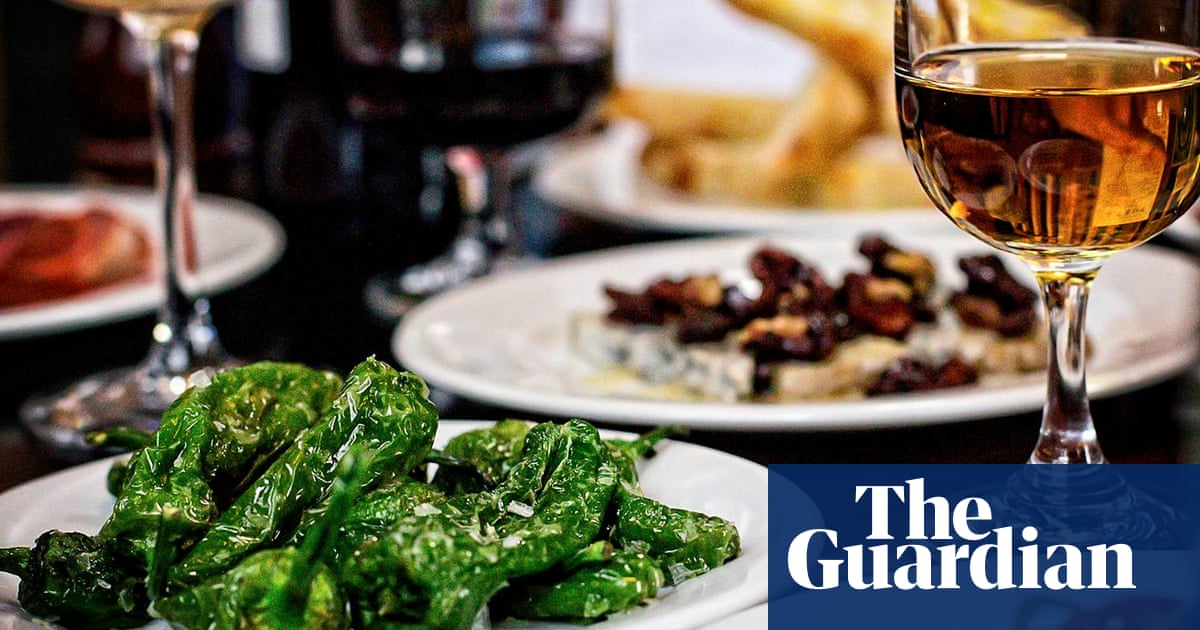
f you want hummus, by all means make some, or better yet, buy some – it’s better from the shop. But if you’re looking to branch out a little, there are thousands of other dips out there, suitable for the dunking of raw or roasted vegetables, flatbreads, tortilla chips, a pointy leaf or almost any other foodstuff sturdy enough to serve as a makeshift spoon.
Some of the dips below may also qualify as sauces, dressings or marinades. We will not detain ourselves over definitions – if it can be consumed as a dip, it counts. Yotam Ottolenghi’s spinach with strained yoghurt and chilli butter illustrates the possibility for confusion – it’s probably best described as an accompaniment when served warm, and a dip at room temperature. Likewise his avocado and broad bean concoction could more precisely be considered a spread, but this largely depends on the presence or absence of a knife at the table.
We might, however, categorise dips based on the things you dip into them. Under “crisps, tortilla chips or similar” we would probably start with guacamole. A strict recipe isn’t necessary – it’s just avocado, onion, garlic, chilli, lime juice, coriander and salt, in quantities largely based on personal preference – but Dave Bry makes his using what he calls the “ceviche method” , which he guarantees is superior.
The dip we often call just plain salsa, which is perhaps more accurately known as pico de gallo (“cockerel’s beak”), is a similar collation of raw ingredients, swapping the avocados for chopped tomatoes. Felicity Cloake’s masterclass version makes a controversial, but sensible substitution: spring onions are used instead of red or yellow ones in a bid to mimic the flavour of the traditional white onion, which is hard to come by in the UK.
Salsa verde is pico de gallo’s green cousin, using tomatillos in place of tomatoes, and is not to be confused with the other salsa verde – a garlic, mustard and green herb sauce traditionally served with roasted meats. Tomatillos look like little tomatoes but they’re actually a sort of physalis, and you can find them in speciality shops if you want to be authentic. If not, you can try the physalis they sell occasionally in supermarkets – AKA cape gooseberries – in which case your salsa verde will be more yellowy-orange than green. When they’re around I often mix physalis with tomatoes in salsa, in a ratio of roughly three of the latter to one of the former. The difference in flavour is fairly subtle, but the colour is impressive.
Here’s another variation requiring little in the way of effort: roasted salsa. It’s all the same stuff, but you whack the main ingredients under the grill first until they start to blister. Allow them to cool, then pulse together in a mixer, adding lime juice salt and coriander.
Dips made to be scooped with veg – radishes, celery, carrots, chicory leaves – include the classic blue cheese dip, for which Cloake recommends gorgonzola whizzed with cream cheese, sour cream, garlic and chives, and cut with a splash of cider vinegar. It’s pretty well guaranteed to spoil your appetite for supper. You might not even make it as far as supper, which is, in a very real sense, a problem solved.
Hugh Fearnley-Whittingstall’s yoghurt, dill and caper dip is a more summery offering that comes together with a gentle stir, while this whipped feta and sumac dip from Clare Thomson achieves a kind of midpoint in consistency between the other two – half feta, half yoghurt – which can be served with either veg or flatbread.
Taramasalata is another classic dip served with bread, but which may itself contain bread, depending on the recipe. This is partly because the chief ingredient, smoked cod’s roe, is expensive, but the addition of bread doesn’t just stretch amounts – according to Nigel Slater it also leavens the texture agreeably.
Baba ganoush is a versatile dip with a single disadvantage: it lacks immediacy. You have to bake the aubergine for about 45 minutes, by which time you could have produced and consumed several other dips. Jamie Oliver’s recipe keeps things otherwise simple. Anna Jones’s borani deploys beetroot to similar effect.
There are a number of dips that are not technically hummus because the chickpeas have been replaced by some other kind of pea or bean. Rosie Birkett’s white bean dip is one of these. The pea hummus (it’s not hummus) in this recipe from reader Natalie Wong pairs frozen peas with thyme and almond butter. You can also fashion a hummus-like dip from lentils, like this one from Bon Appetit, or even sweet potato.
Finally there is the all-time American classic, French onion dip. The traditional method produces the simplest dip ever, and to the unacquainted, possibly the most off-putting: you stir a packet of proprietary dried French onion soup mix – as it comes – into a quantity of sour cream. That’s it, and it’s delicious served with raw veg or heavy, ridged crisps. Some people add a little mayonnaise, but purists will keep to the two ingredients listed the recipe on the back of the soup mix box. Instructions are hardly required, and I link to them here only so you know I’m not making this up.
Unfortunately, the key ingredient is not readily available in the UK (although you can order the Knorr version, which appears to be popular on the continent). It is possible to make a passable version of this dip from scratch, and although that really isn’t the point, I suppose it cannot hurt to try.












